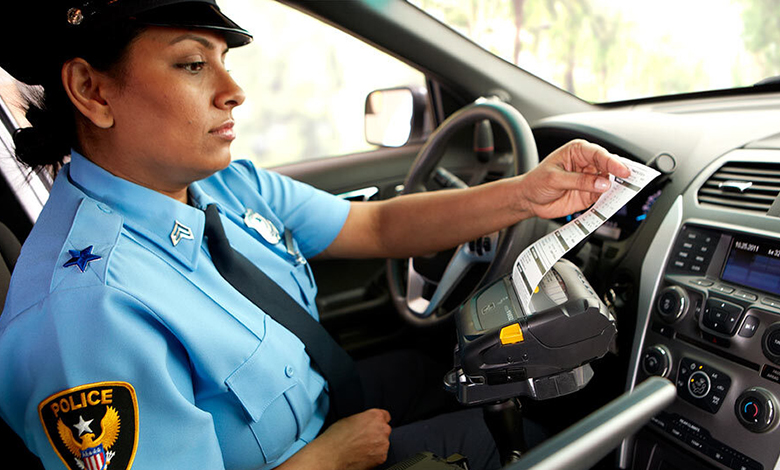Issuing and processing citations automatically has benefitted police officers, parking enforcement personnel, and building inspectors, and the courts that process the citations.
I had a chance to talk through this recently with Mike Gambrell, retired Chief of Police for Greenville, South Carolina, and currently the GovSOLV Program Manager at SYNNEX. During Mike’s 30 years of service as a sworn officer, he witnessed firsthand the transition from handwritten tickets to automated data capture, real-time query of databases during traffic stops, and integration with backend systems to avoid the extra step of entering data from tickets. Mike saw this first from the perspective of a new officer writing traffic tickets, later as a supervisor managing the ticket writers, and finally as a chief looking at the big picture.
Safety First
When asked about how the automation of citations affects officer safety, Mike explained, “what we’re trying to do with the introduction of technology is actually enhance their lives by minimizing the amount of time that they’re on scene, and being able to provide them with as much intel as they need to make quick, accurate decisions, along with providing the ability to defend themselves in a traffic stop situation.”
“When I got involved in law enforcement, I made a traffic stop by picking up my radio, calling into headquarters, providing a description of the vehicle, the tag number, a description of the individual that I’d seen inside the car, and where I was making the traffic stop. And I went into all this blindly, without any technology. The traffic stop, exiting your patrol car, and making the approach. And then I’d have to go back to the patrol car and get out a pen and sit there and write all of the information down. It was a lengthy process.”
“Now, I’m able to bring that same driver’s license and registration, scan them, and it automatically populates. I don’t have to deal with a third copy of the citation and write down all of the essential information. When I issue the ticket today, I only have to add a few things, such as, the violation, the location, and the court date. This minimizes the amount of time an officer is involved in a traffic stop and minimizes the amount of time that it possibly takes to be hurt or killed in a traffic stop situation.”
Save Money and Time
Another advantage of automating citations is the success rate in court. Hand-written citations are subject to error, at the time they are written, and again when a clerk reads the paper copy and enters the data into the system. Defense lawyers can challenge the citation on the grounds of inaccurate data, often successfully. That’s lost revenue from fines and wasted time for the officer and the court.
“Let’s think about that handwritten citation. You’ve got to pay a data entry clerk to be able to sit there and tap that into the system.”
Increasing the rate of successful prosecution and reducing wasted time certainly can be used to justify the cost of the technology—typically eCitation software, handheld or tablet computers, and mobile printers. Grants from the federal government and other sources can partially fund a solution, and the state may provide the software. A more compelling factor is that the automation can be self-funded by adding a few dollars to each fine.
As Mike said, “that is truly one of the funding sources that is relied upon. I know I mentioned grants that are coming down, and asset forfeiture has also been used in the past. When you’re putting these grants together and defining how this is going to enhance your abilities, the Department of Justice, Bureau of Justice Administration, will ask the same questions. You have to define that. In the police department and city government, 90% of your budget consists of salary and benefits. There are various funding streams and sometimes you have to think outside the box.”
Find Your Funding Stream
“Realize that it’s something that’s going to enhance your officer’s safety, enhance the efficiency of your overall department, and enhance your service to your citizens. It’s critical to sit down and look at your funding streams and contract vehicles.”
“Connection can help you find a possible funding stream, look into demo equipment, and the solution as a whole. They can help you identify how this [solution] will enhance your efficiency. Whether it’s through funding that you’re seeking on a state or national level, or through mayor and council—Connection can help you identify that. Reach out to the experts. Connection will sit down and talk with you, and help you identify some of the key points in integrating this solution into your department.”
Many thanks to Chief Mike Gambrell for sharing his insights in this interview!


